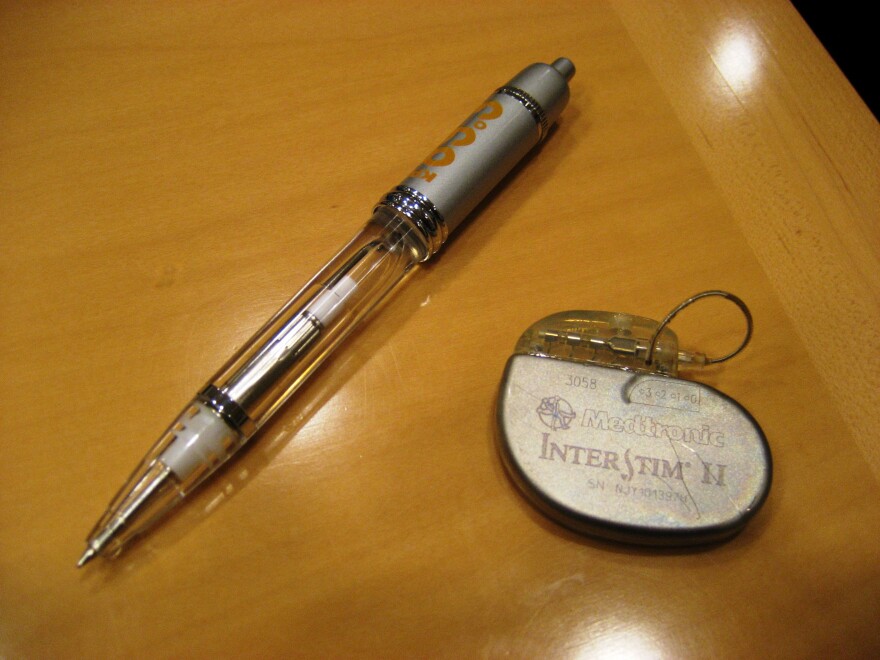With our free press under threat and federal funding for public media gone, your support matters more than ever. Help keep the LAist newsroom strong, become a monthly member or increase your support today.
Bladder Pacemaker, Part 1 - Help for people with overactive bladders

It’s estimated that about 13 million people in the United States deal with urinary incontinence. For many, standard treatments don’t work. In the first of a series of reports, we take a look at treatment that’s gaining acceptance: a “bladder pacemaker.”
When you constantly feel like you have to go to the bathroom or you tend to leak, there used to be few options.
Dr. Larissa Rodriguez, a urologist at UCLA, says there are a handful of medications. Doctors can even try Botox, the same stuff used to smooth wrinkles. But using Botox for bladders is an off-label use, so health insurance considers it cosmetic and doesn’t cover it.
"In the past, when people had difficulties with their bladder, where they were having incontinence, severe frequency, the only option we had if they failed medical management or biofeedback or anything conservative, was to make their bladders bigger with a piece of intestine, which is a big surgery," Rodriguez says. "Now we almost never do that surgery because of neuromodulation."
Or better known as the bladder pacemaker.
Rodriguez says the device has filled the wide gap between conservative bladder treatment and surgery that would keep you in the hospital for 10 days.
Next in the series, we'll take a look at how the bladder pacemaker is implanted.







